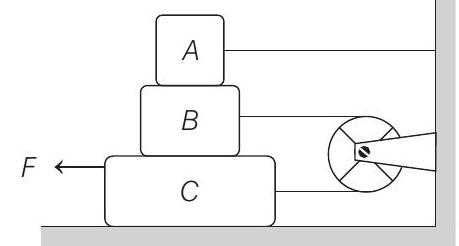Laws of Motion 3 Question 24
26. In the figure, the blocks
(1978)

Integer Answer Type Question
Show Answer
Answer:
Correct Answer: 26.
Solution:
- Maximum friction between
or
Maximum friction between
or
Maximum friction between
Block 
For equilibrium of
For equilibrium of






